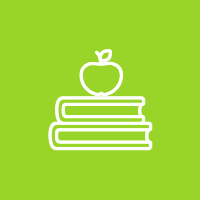Aluminum is a nonrenewable, but recyclable, natural resource that we use every day. In this activity, students sequence the steps that go into making aluminum products and participate in a service-learning project to encourage aluminum recycling in their community.
This is one of 96 activities that can be found in PLT’s PreK-8 Environmental Education Activity Guide. To get the activity, attend a training either in person or online and receive PLT’s PreK-8 Guide. Below are some supporting resources for this activity.
STUDENT PAGES 
Download the copyright-free student pages that are included with this activity:
The Making of an Aluminum Can
(PDF)
Spanish Student Page(s):
Como se hace una lata de Aluminio
(PDF)
RECOMMENDED READING 
Expand your students’ learning and imaginations. Help students meet their reading goals, while building upon concepts learned in this activity, with the following children’s book recommendations:
ADDITIONAL RESOURCES 
The following tools and resources may be used to enhance the activity.
-
PLT’s 12 Green Job Fact Sheets
Learn more about the wide array of jobs related to forests with PLT’s 12 Green Jobs Fact Sheets, which highlights the following green jobs: Forester, Environmental Educator, GIS Specialist, Indigenous Relations Specialist, Forestry Technician, Park Ranger, Hydrologist, Silviculture Technician, Urban Forester, Machine Operator, Wildlife Biologist, and Sustainability Manager. Green jobs offer opportunities for people with diverse backgrounds, skills, interest areas, and personal qualities. Youth and adults alike might be surprised at the range of green career opportunities. These jobs help sustain forest ecosystems and ensure that forest products are produced in the most sustainable way possible also ensure that wildlife habitat is conserved, trees are replanted, and workers are treated fairly.
-
Generate: The Game of Energy Choices
Generate: The Game of Energy Choices is a board game from the U.S. Environmental Protection Agency that teaches students about the costs and benefits of the energy choices we make; what happens if the mix of energy sources changes in the future; and what energy choices mean for our climate, air, water, and overall environmental quality. Teachers can download a printable version of the game and accompanying materials.
-
Where Does Our Trash Go?
The lifecycle of garbage is illustrated through photos and simple captions from the Lawrence County Solid Waste Management District (IN).
-
My Garbology
We toss items into the trash every day – about 4.4 pounds per person per day, on average. With garbology, the study of waste, students can learn about waste reduction and steps they can take to reduce the amount of trash on the planet. This website’s interactive interface allows students to learn about the recycling, reusing, composting, and disposing of several everyday items.
-
Recycle City
EPA’s Recycle City’s interactive website showcases an interactive map, scavenger hunt, and game that all explore ways homes and businesses can recycle, reuse, or reduce waste. Use this website to spark interesting discussions around waste and recycling in places and spaces where students can have direct impacts.

